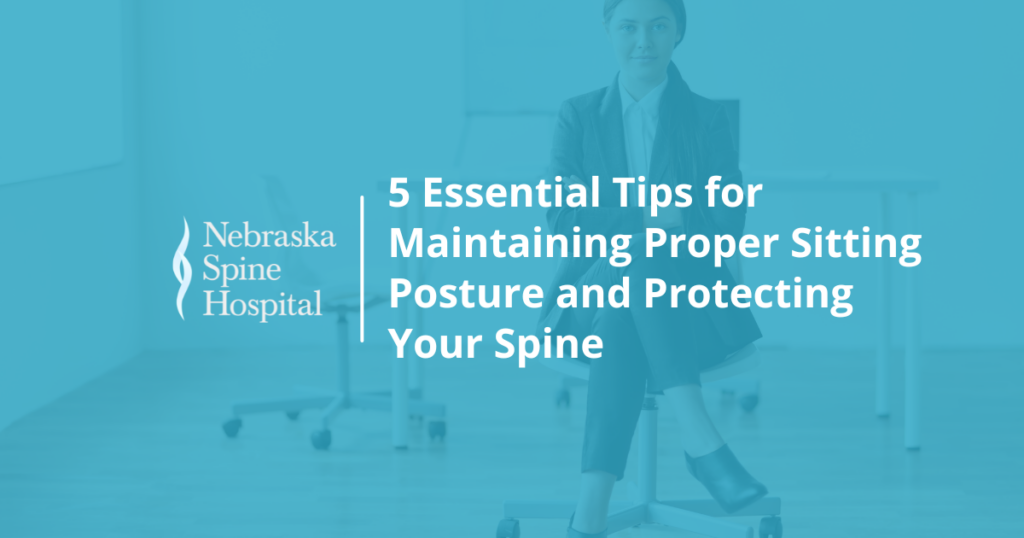Maintaining proper sitting posture is one of the most effective ways to protect your spine and promote overall well-being. Whether you’re working at a desk, driving, or simply relaxing at home, poor posture can lead to significant strain on your back, neck, and shoulders, ultimately impacting your spine health. At Nebraska Spine Hospital, we are committed to providing expert care and guidance on maintaining a healthy spine. Read on for actionable tips to perfect your sitting posture and prevent back pain.
Why Sitting Posture Matters
The way you sit directly impacts the alignment of your spine. Poor posture—such as slumping, slouching, or leaning forward—creates uneven pressure on your spinal discs. Over time, this adds stress to the muscles and ligaments supporting your spine, increasing the risk of chronic back pain, herniated discs, and other spine issues. Good sitting posture, on the other hand, properly distributes your body weight and minimizes stress on the spine, reducing the likelihood of discomfort or injury.
5 Tips for Practicing Proper Sitting Posture
If you’re ready to improve your posture and safeguard your spine health, try incorporating these simple yet effective habits into your daily routine:
1. Sit All the Way Back in Your Chair
Ensure your lower back is supported by sitting fully back in your chair. Your chair’s backrest should align with the natural curve of your spine, providing support to your lumbar region. An ergonomic chair or a small cushion can help maintain this position.
2. Keep Your Feet Flat on the Floor
Avoid crossing your legs or dangling your feet while seated. Instead, keep your feet flat on the ground with your knees bent at a 90-degree angle. This stabilizes your pelvis and encourages proper alignment of the lower spine.
3. Align Your Shoulders and Ears
Your shoulders should remain relaxed and aligned with your hips, while your ears should line up with your shoulders, forming a straight vertical line. Avoid craning your neck forward—a common habit, especially when working on a computer.
4. Monitor Your Screen Position
When sitting at a desk, your computer monitor or device screen should be at eye level to prevent the “tech neck” phenomenon. Repeatedly looking down at devices can strain your neck and upper spine. Use a monitor stand if needed to adjust the screen height.
5. Take Breaks and Move Often
Even with perfect sitting posture, staying in one position for an extended period can stress your spine. Set reminders to stand, stretch, or walk around every hour to give your back muscles a chance to relax.
Nebraska Spine Hospital: Your Partner in Spine Health
At Nebraska Spine Hospital, we understand the importance of preventing back pain before it starts. Our team of spine care specialists focuses exclusively on spine health, offering expert advice and advanced treatments tailored to your needs. Whether you’re experiencing persistent back pain or simply want to optimize your posture, we’re here to help.









